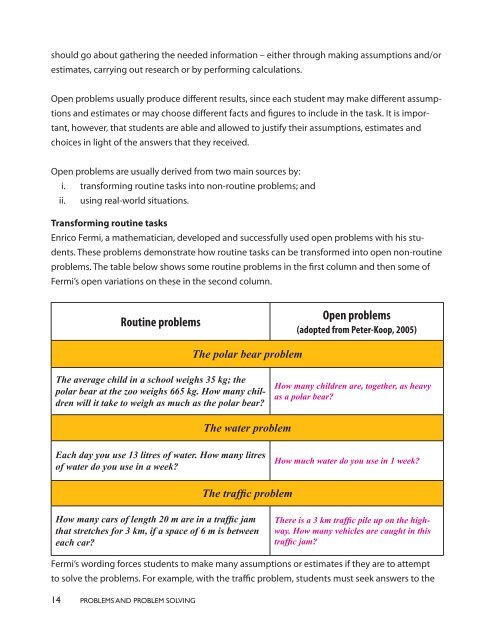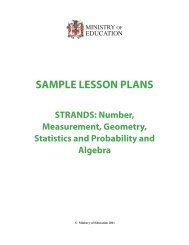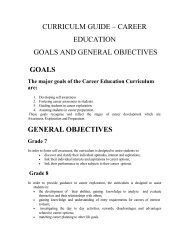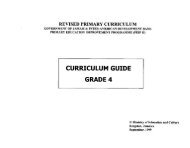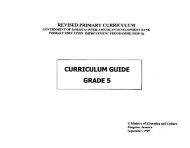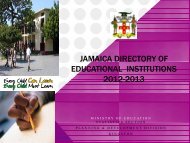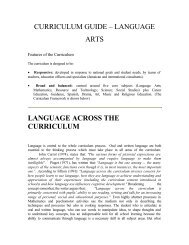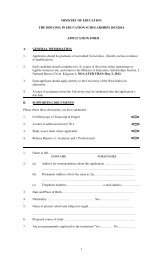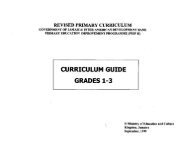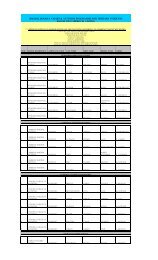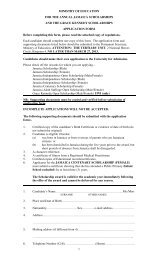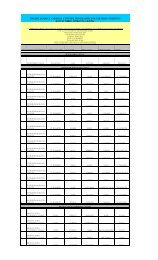Problems and Problem Solving - Ministry of Education
Problems and Problem Solving - Ministry of Education
Problems and Problem Solving - Ministry of Education
Create successful ePaper yourself
Turn your PDF publications into a flip-book with our unique Google optimized e-Paper software.
should go about gathering the needed information – either through making assumptions <strong>and</strong>/or<br />
estimates, carrying out research or by performing calculations.<br />
Open problems usually produce different results, since each student may make different assumptions<br />
<strong>and</strong> estimates or may choose different facts <strong>and</strong> figures to include in the task. It is important,<br />
however, that students are able <strong>and</strong> allowed to justify their assumptions, estimates <strong>and</strong><br />
choices in light <strong>of</strong> the answers that they received.<br />
Open problems are usually derived from two main sources by:<br />
i. transforming routine tasks into non-routine problems; <strong>and</strong><br />
ii. using real-world situations.<br />
Transforming routine tasks<br />
Enrico Fermi, a mathematician, developed <strong>and</strong> successfully used open problems with his students.<br />
These problems demonstrate how routine tasks can be transformed into open non-routine<br />
problems. The table below shows some routine problems in the first column <strong>and</strong> then some <strong>of</strong><br />
Fermi’s open variations on these in the second column.<br />
Routine problems<br />
Open problems<br />
(adopted from Peter-Koop, 2005)<br />
The polar bear problem<br />
The average child in a school weighs 35 kg; the<br />
polar bear at the zoo weighs 665 kg. How many children<br />
will it take to weigh as much as the polar bear?<br />
How many children are, together, as heavy<br />
as a polar bear?<br />
The water problem<br />
Each day you use 13 litres <strong>of</strong> water. How many litres<br />
<strong>of</strong> water do you use in a week?<br />
How much water do you use in 1 week?<br />
The traffic problem<br />
How many cars <strong>of</strong> length 20 m are in a traffic jam<br />
that stretches for 3 km, if a space <strong>of</strong> 6 m is between<br />
each car?<br />
There is a 3 km traffic pile up on the highway.<br />
How many vehicles are caught in this<br />
traffic jam?<br />
Fermi’s wording forces students to make many assumptions or estimates if they are to attempt<br />
to solve the problems. For example, with the traffic problem, students must seek answers to the<br />
14 PROBLEMS AND PROBLEM SOLVING<br />
<strong>Problem</strong><strong>Solving</strong>.indd 14<br />
8/24/12 6:55:34 PM


